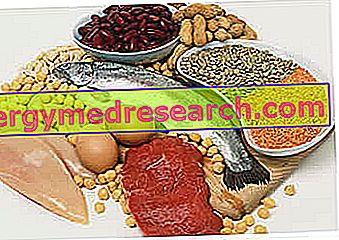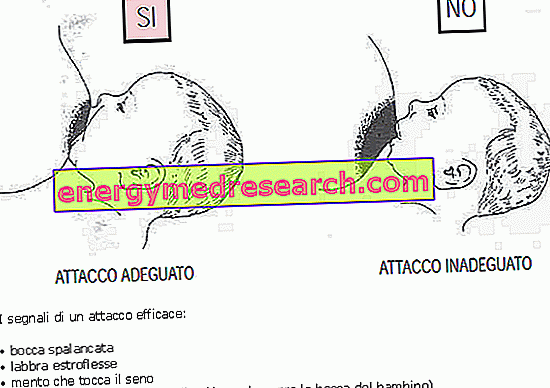MEFOXIN ® is a drug based on Cefoxitin sodium salt
THERAPEUTIC GROUP: General antimicrobials for systemic use - Cephalosporins
IndicationsAction mechanismStudies and clinical effectiveness Usage and dosage instructionsWarnings Pregnancy and lactationInteractionsContraindicationsUndesirable effects
Indications MEFOXIN ® Cefoxitine
MEFOXIN ® is indicated in the treatment of bacterial infections caused by both Gram positive and cephalosporin-sensitive negative bacteria.
Its effectiveness has been demonstrated above all for the infections from Gram negative bacteria particularly resistant to antibiotic therapy, responsible for pathologies, even serious, in immunocompromised patients.
Mechanism of action MEFOXIN ® Cefoxitine
The cefoxitin, active ingredient of MEFOXIN ®, is an antibiotic belonging to the category of cefamycins, from which it derives chemically and structurally, belonging to the family of second generation cephalosporins.
The cefoxitin and more generally the second generation cephalosporins are characterized by:
- A broad spectrum of action, effective on both Gram positive and negative bacteria:
- A high stability against plasmid beta-lactamases, enzymes synthesized by bacterial cells in order to inactivate the beta-lactam antibiotic reducing its therapeutic efficacy;
- Particularly advantageous pharmacokinetic properties.
From a molecular point of view, cefoxitin performs its antibiotic action by inhibiting the transpeptidation reaction useful for the formation of cross-linking between the peptidoglycan molecules, thus making the micro-organism particularly susceptible to osmotic lysis.
Following parenteral administration, the active ingredient, distributed among the various tissues and biological fluids, exercises its bactericidal activity in a few minutes and is subsequently eliminated unchanged via the kidney.
Studies carried out and clinical efficacy
1. CEFOXITIN IN PROPHYLAXIS OF ACUTE APPENDICITIS
An Esp Pediatr. 1997 Sep; 47 (3): 279-84.
Study demonstrating that treatment with cefoxitin may be effective and safe in controlling symptoms and reducing infection during acute appendicitis in pediatric patients.
2 . THE MODEST EFFICACY OF CEFOXITIN IN THE TREATMENT OF PELVIC INFLAMMATORY DISEASES
Infect Dis Obstet Gynecol. 1997; 5 (5): 319-25.
Work demonstrating the partial efficacy of cefoxitin in the treatment of pelvic inflammatory diseases, even when supported by pathogenic microorganisms. Unfortunately the therapeutic efficacy estimated at around 56% of patients treated is often combined with important side effects due to particularly high doses.
3.CEFOXITHIN AND MOLECULAR MECHANISMS OF ANTIBIOTIC THERAPY
Acta Med Port. 1993 Oct; 6 (10): 467-71.
A dated study investigating the efficacy of cefoxitin in the treatment of infections caused by anaerobic bacteria. The identification of a molecular pattern could be useful for understanding therapeutic mechanisms and related clinical applications.
Method of use and dosage
MEFOXIN ®
Powder and solvent for 1 g solution for injection - 2 gr of cefoxitin.
The dosage and timing of recruitment must necessarily be established by the physician on the basis of the physio-pathological characteristics of the patient, the severity of the clinical picture and possibly the presence of conditions incompatible with the therapy.
The administration of MEFOXIN ® could take place intramuscularly, in this case it would be appropriate to use the solution containing lidocaine, or intravenously, therefore requiring the supervision of competent health personnel.
Dosages can range from 3 to 12 grams of cefoxitin per day, divided into 3 - 4 different administrations, based on the complexity of the disease in progress.
Warnings MEFOXIN ® Cefoxitin
The use of MEFOXIN ® necessarily requires the supervision of a competent doctor given the potential side effects associated with the therapy and the need to adjust the doses used to the patient's physiopathological conditions.
Periodic monitoring of renal and hepatic function parameters would also be useful to avoid the appearance of potentially serious side effects.
The use of cefoxitin should also be preceded by the isolation of the organism and by the identification, through antibiogram, of the sensitivity to cefamycins.
The use of this medicine in adaptation could in fact lead to the spread of microorganisms resistant to antibiotic therapy, complicating the outcomes of the disease.
PREGNANCY AND BREASTFEEDING
Given the lack of studies able to test the safety profile of cefoxitin on the fetus, it would be appropriate to limit the use of MEFOXIN ® during pregnancy to cases of real need and always under strict medical supervision.
These precautions should also be maintained in the subsequent breastfeeding phase, given the tendency of cefoxitin to accumulate in breast milk.
Interactions
The patient receiving MEFOXIN ® should consult their doctor before taking any other active ingredients.
Particular caution should be reserved for the simultaneous administration of cefoxitin and other potentially nephrotoxic drugs, given the increased risk of tubular and glomerular damage.
NSAIDs such as acetylsalicylic acid and phenylbutazone could increase the cefoxitin plasma concentrations by altering their therapeutic properties and related safety profile.
Contraindications MEFOXIN ® Cefoxitine
The use of MEFOXIN ® is contraindicated in patients hypersensitive to penicillins and cephalosporins or their excipients in addition to lidocaine (for intramuscular administration).
Undesirable effects - Side effects
Cefoxitin is an active ingredient that is generally well tolerated and has no particular side effects.
However, especially in patients who are predisposed or following particularly intense and long-lasting therapy, the administration of MEFOXIN ® could determine the appearance of:
- Nausea, vomiting and diarrhea;
- Tubular and glomerular damage accompanied by urinary anomalies and proteinuria;
- Hemolytic anemia, neutropenia, leukopenia and myeloinhibition;
- Hypertransaminasemia and hyperbilirubinemia;
- Lethargy, spasms, convulsions and various neurological symptoms;
- Angioedema, pruritus, urticaria, bronchospasm, hypotension and anaphylactic shock.
Note
MEFOXIN ® is a prescription-only drug



